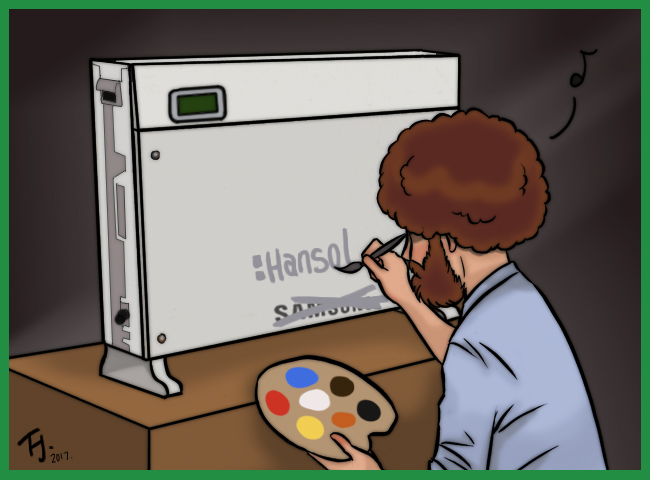
Samsung has decided to let their partner, Hansol Technics, take over their residential battery storage systems. However, the rebranding probably wasn’t done by someone cosplaying as Bob Ross.
There are now over 200 Samsung AIO battery systems installed in Australia, providing battery power to households both on-grid and off. Their manufacturer, Samsung, is a giant, South Korean based, multinational conglomerate and if you’d like snag yourself a brand new AIO battery system from them, that’s terribly unfortunate, because you can’t have one.
But what you can have is system that is exactly the same, with Samsung battery packs inside, and the name of one of Samsung’s partners, Hansol Technics, on the exterior. I can’t be certain why Samsung decided to hand over its residential energy storage systems to Hansol, but if I had to take a guess, I’d say it was probably because of this:
The good news is the Samsung batteries used by Hansol are not the same as the ones in Samsung Galaxy Note 7 smart phones that, on very rare occasions, got a little bit explodey. While there is no evidence of safety problems with the cells they use for residential storage, Samsung may have decided people would prefer it if Hansol’s name was on the system rather than their own.
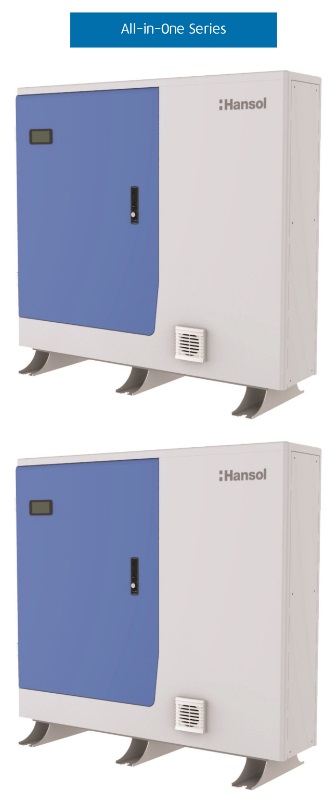
The AIO 7.2 and AIO 10.8. They are exactly the same except one has 2 battery packs inside while the other has 3.
The Samsung Energy Storage Systems are now called the Hansol Scalable All-In-One or AIO for short. They come in two sizes named after their nominal battery capacities in kilowatt-hours. The AIO 7.2 and AIO 10.8. As they have a 90% depth of discharge, their usable capacities are 6.48 and 9.72 kilowatt-hours.
The system is called an All-In-One because it comes with a built in solar inverter your panels get plugged into. As the inverter is multimode, which is another name for hybrid, it is capable of providing power from the batteries and solar panels whether your home is on-grid or off-grid.
The solar inverter is identical for both systems with a capacity of 4.98 kilowatts. The AIO 10.8 can supply 4.98 kilowatts of power from the battery alone, but the AIO 7.2 can only supply a maximum of 4 kilowatts from the battery.
The system only has a 5 year product warranty, but the batteries have a 10 year performance warranty that promises they will retain at least 65% of their original capacity for the first of 10 years or 6,000 cycles. The good news is since most households cycle their batteries less than once a day, the performance warranty should last the full 10 years.
The installed cost of the AIO 10.8 should be around $13,500. If the battery is fully cycled once per day and suffers linear deterioration down to 82.5% of its original usable capacity over the system’s 5 year warranty period, then its cost per warranted kilowatt-hour would be 74 cents per kilowatt-hour.
If just the performance warranty of the batteries is considered then it comes to a much better 41 cents per stored kilowatt-hour. But having long lasting batteries may be of little use if the rest of the system is out of warranty and fails first.
The user manual says the AIO is for residential use only and not commercial.
Hansol Battery Technical Specs
Here are the Hansol All-In-One technical specs:
Hansol Scaleable AIO Design
The Hansol AIO isn’t just any all-in-one. It’s scalable! Admittedly, it’s not very scalable, as your choice is limited to either 2 battery packs in the AIO 7.2 or 3 battery packs in the AIO 10.8 with with everything else being identical. That’s not a vast array of options, but being a simple guy, I can see value in keeping things simple.
Hansol’s Samsung Battery Cells
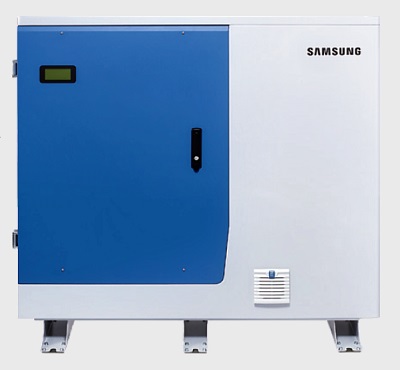
Here is a picture of the AIO back when it still had Samsung on the case. As you can see, it looks exactly the same as the Hansol units.
The battery packs inside the Hansol AIO contain Samsung’s cylindrical SDI cells and are different from the much flatter prismatic cells used in the world’s hottest phone, the Galaxy Note 7. I am not aware of any safety problems with their cylindrical cell. Of course, that doesn’t mean it’s safe to toss a few on the barbie.
The battery cells used by Hansol were manufactured in Samsung’s South Korean facility and not the factory in China that made the smart phone batteries that caught on fire which caught on fire.
South Australia’s big battery under construction at this moment uses Samsung cylindrical cells. I don’t know if the cells are identical to those used by Hansol, but the big battery’s announced performance of 100 megawatts of power with 139 megawatt-hours of storage, provides significantly more power per kilowatt-hour than the Hansol AIO.
Samsung says the cells used in the Hansol AIO are good for at least 6,000 cycles. This high cycle life is typical of lithium-iron phosphate cells, but Samsung’s batteries are NMC which stands for Nickel Manganese Cobalt oxide. While the amount of cobalt is only small, it is still important to remember not to eat them.
Power And Endurance
The maximum continuous power output of the batteries of the AIOs are shown on the graph below under “Load” and the amount of time they can maintain that output is shown under both “Hour” and “Min”, with “Min” being short for minutes and not Nicki Minaj, as in conventional use:
Backup Capability
The Hansol AIOs can be used off-grid and can also provide backup power for on-grid households during a blackout. The user manual states backup power will be provided within 30 seconds of a grid failure and I have been told it usually turns on within seconds. It can provide power from both solar panels and battery storage, although its inverter size will limit its power output to maximum of 4.98 kilowatts, with the AIO 7.2 limited to 4 kilowatts when only battery power is available.
Depth Of Discharge
In order to prolong the life of the batteries their depth of discharge is limited to 90%. This involves the battery management system always leaving 5% spare capacity in the battery and never discharging it below 5%, which is what the 5~95% figure in the user manual means:
Round Trip Efficiency
When I first saw the Hansol AIO on display at the Melbourne All Energy Conference there was a printout on the wall that said its round trip efficiency was far better than the competition at an amazing 95%. When I saw that I was convinced that it was too good to be true. While I have to admit I have been wrong about a great many things in my life, tragically, this was not one of those times.
This graph from the user manual shows why:
As you can see, at best the battery is less than 96% efficient when charging from the grid and it may not do better than this when charging from solar panels as their will also be losses there. When discharging, the red line indicates the AIO will, at best, be 95% efficient at providing AC power to the household. Under ideal conditions it might have a round trip efficiency of around 90% but in real life it is probably going to be considerably less. I don’t expect its round trip efficiency to be worse than similar systems, but at the moment, similar systems don’t appear to be doing too well in this area.
Operating Temperature
The normal operating temperature of Hansol AIO is -10 to 40 degrees. This is the ambient temperature, which is the local air temperature. It is impressive that the battery will function down to -10 degrees, which is handy in places like Canberra, although not too relevant for most Australians. Unfortunately, the upper limit of 40 degrees seems a bit low for this country, but the good news is the AIO won’t conk out as soon as it hits 40 degrees. Instead, its output will be derated to protect the batteries from getting too hot and it will supply only 60% of its maximum power output when the temperature is from 40 to 49 degrees. The derating is shown on the table below:
As very few people live in places where the temperature reaches 50 degrees, for most users power output is unlikely to ever fall below 60% even in a hellish heatwave. This would come to 2.4 kilowatts for the AIO 7.2 and 3 kilowatts for the AIO 10.8. Typical room air conditioners use less than one kilowatt of electricity, so even in a heat wave with an AIO 7.2 you should be able to run 2 room air conditioners, lights, TV, and an efficient refrigerator without dipping into grid power for at least 2 hours and 40 minutes when the batteries are new.
Battery Installation Location
The Hansol AIO’s Ingress Protection rating is IP54. This means it is not affected by both dust and splashing water. This is slightly surprising because its user manual says it must be protected from both dust and splashing water and if located outside it must be in a roofed area where it is protected from rain. But I presume its Ingress Protection rating is correct and the user manual just wants you to err on the side of safety. But note its written warranty says the user manual has to be complied with for it to apply.
Also, the AIO has to be bolted down to ensure it won’t fall over in earthquakes or if some drunken person decides it needs a nice lie down1.
While I am certain the chance of a battery fire is low and no worse than for other storage systems with similar battery chemistry, I still suggest taking fire risk into account when locating it, as I would for any energy storage system that isn’t made out of fire retardant.
Noise
The AIO produces noise equal to or less than 50 decibels at 1 meter. Although presumably not all the time. This would put it at about the level of an older refrigerator. While not especially loud, you still probably wouldn’t want it next to a bedroom or in a home office.
Unit Size
The the AIO is 1.2 m across, 1.14 m high, and 28 cm deep, giving it a volume of 383 liters. Its user manual provides this illustration showing its size and weight:
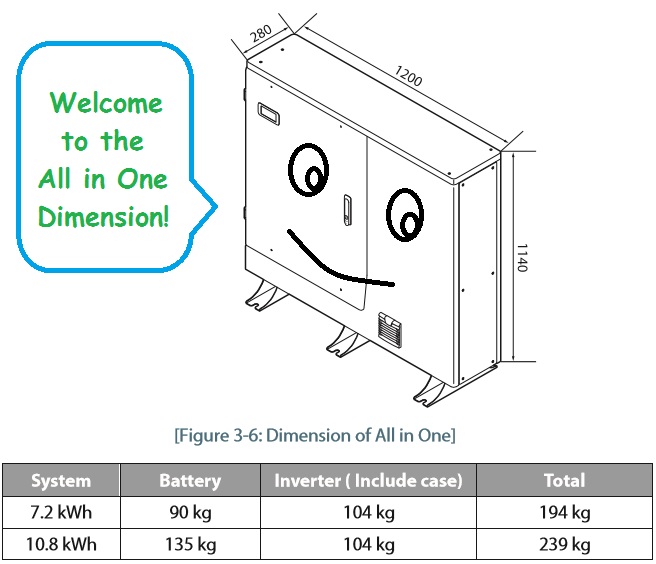
This illustration may have been slightly altered from its appearance in the user’s manual.
But you’ll need a little more space than its size suggests, as it requires at least 10 cm clearance behind it and at least 30 cm clearance on the sides.
An Internet Connection Is Required
The AIO requires an internet connection so the performance of the batteries can be monitored online and so the operating system can be automatically updated if required. While it can be operated offline, its warranty states:
A reliable internet connection may be an issue for some off-grid locations. (Actually, it can be an issue in the heart of Australia’s capital cities, but I won’t go into that now.) I do not know how much information the AIO sends to Hansol’s servers, so people with very limited bandwidth may wish to check this.
An internet connection allows the AIO to be easily monitored online.
5 Year Product Warranty +10 Year Battery Performance Warranty
The AIO warranty presents a puzzling dichotomy. On the one hand Hansol provide only a 5 year warranty for the AIO itself, but on the other hand they provide a performance warranty for the batteries that will last any normal household 10 years.
This means anyone who purchases it will run the risk of having perfectly usable batteries with an intact warranty trapped inside the dead husk of an out of warranty AIO unit. While it should be possible to pay to have the AIO repaired or replaced, given the rapid declines we’ve seen in battery system costs, this may not be economical by the time the 5 year warranty runs out and replacing the whole system may be the most cost effective choice.
The battery performance warranty promises they will maintain at least 65% of their original capacity for the first of 10 years or 6,000 cycles. As most households with batteries cycle them less than once per day the performance warranty should last the full 10 years.
I asked if Hansol was considering increasing their warranty from 5 to 10 years in the future and I was told that was a possibility.
Economics
If the following assumptions are made about an AIO 10.8:
- The battery system costs $13,500 to install.
- It lasts twice as long as its 5 year warranty.
- It’s original capacity deteriorates in a linear way down to 75% after 10 years.
- It is fully cycled once per day.
Then it will provide a total of 31,065 kilowatt-hours before it bites the dust. Dividing the $13,500 installation cost by this amount gives 43 cents per kilowatt-hour. This is not enough to save people who are on-grid money, but it may interest people living off-grid.
Hopefully, Hansol will soon feel confident enough to offer a full 10 year warranty on the entire system. This would allow households to feel confident it’s likely to last them more than 10 years in practice.
Footnotes
- Oddly enough, the later option is probably more likely even in Christchurch. This is just one reason why Australia has never removed the option of New Zealand becoming part of Australia from its constitution. ↩

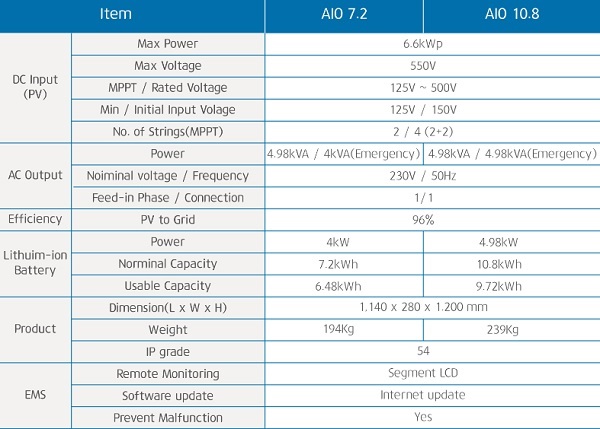

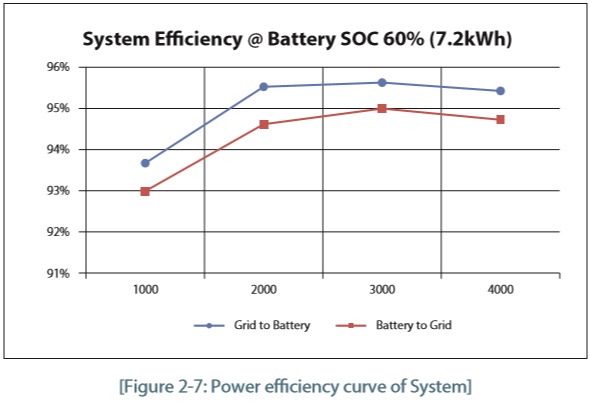
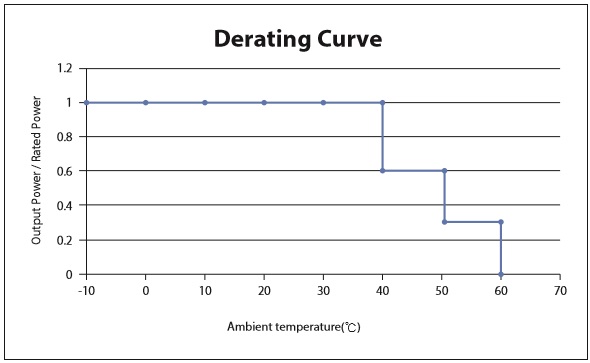

 RSS - Posts
RSS - Posts



Had two Samsung TV’s and both failed. One exploded and the other just died suddenly. Had two Samsung mobile telephones, both of which did not last a year. They have been producing washing machines that catch fire. Not to mention the Galaxy 7. Seeing a pattern here? One the plus side, my Samsung DVD player is still going after about 13 years. I don’t think that I will be buying one.
Some people are unlucky, as I’ve had the Samsung Galaxy S4, S5 and now the S6 and they have been fantastic phones, no problems at all.
How does the AIO 10.8 compare with the Tesla Powerwall 2?
In the article is
”
The system is called an All-In-One because it comes with a built in solar inverter your panels get plugged into. As the inverter is multimode, which is another name for hybrid, it is capable of providing power from the batteries and solar panels whether your home is on-grid or off-grid.
”
Regarding the inverter component, does it have MPPT functionality that allows different arrays of panels, of different orientations, to be connected to it?
Also, does the incorporated inverter allow overloading of power generated from the panels, to be fed into it, so that, for example, could it allow the overloading factor of 1.33 (thence, for the 4.98kW inverter, 6.6kW of power to be fed into it)?
And, can these be used either in series or in parallel , so as to form a battery that would have storage capacity of multiples of the 10.8kWh, whilst not exceeding the 4.98kW of output, thereby complying with utility company restrictions as applicable on the WA SWIS grind, of 5kW for total inverter capacity on a single phase electricity grid supply??
Yes.
Yes.
I’m pretty sure Distributed Network Service Providers will go by the total inverter capacity and not look at how it is wired up.
Unlike other mainstream battery storage systems, can you monitor your system activity (PV generated, exports to network, consumption and battery storage) with this system through a remote, such as a smartphone phone app, in real time?
I recently had a new PV system installed including battery storage. I noted a considerable disparity between information being displayed on a smartphone app and that on the inverter monitor; upon enquiry with the inverter manufacturer, I was told that I have a 5 minute delay inbuilt into my smartphone app to monitor my system. So unless I am standing in front of the monitor on my inverter, I cannot get real time information on the system performance. Very challenging if you wanted to proactively manage your system!
I understand that tmany major inverter brands offering smartphone apps, also have varying delays. When I purchased this system neither I nor the solar installation company were aware of this inbuilt delay; the manufacturer appears to think that delayed information to a smartphone app (of their own branding) is acceptable. I do not.
I would be interested in others comments and ideally, how to attain real time information remotely.
Hello
How hansol 5.5 differs from Q.home ESS 5.5? it is the same product
The Q.home ESS 5.5 is made by Hansol Technics so I am sure it is the same product.
Where is the info to make an inquiry for a pktentiAl buy
Hi Leo
If you are interested in receiving quotes for batteries you can go to our home page:
https://www.solarquotes.com.au/
And enter your postcode in the space at the top right then click on “Get 3 Quotes Now”. On the page that comes up click on “Upgrades” and answer the questions that come up as best you can.
I have the 10kw system – fully off grid – and apart from the fact that you can’t add to it, it’s a great system. I love it.